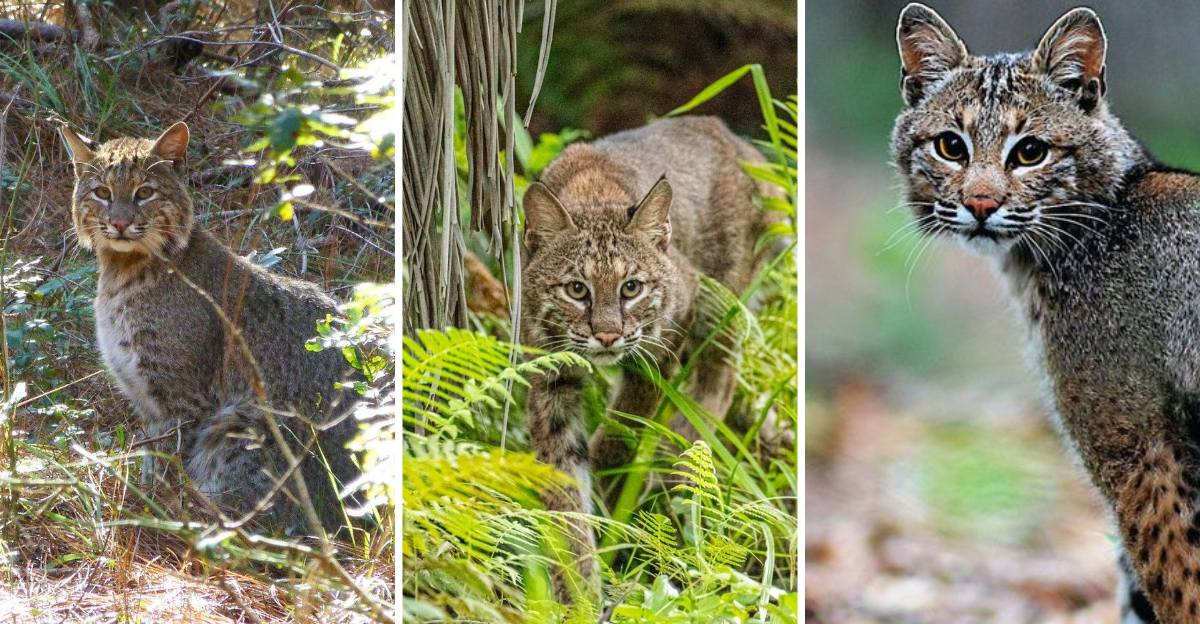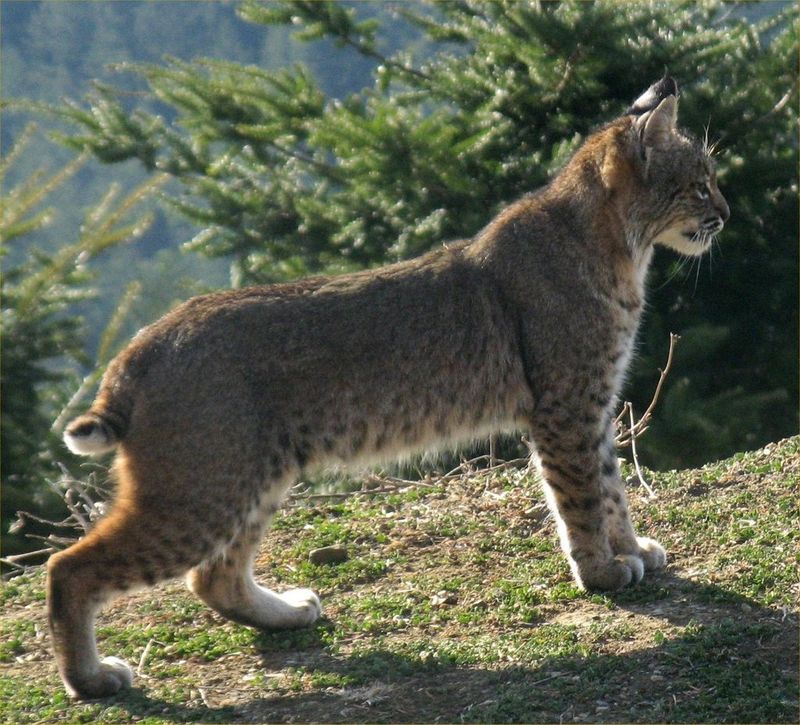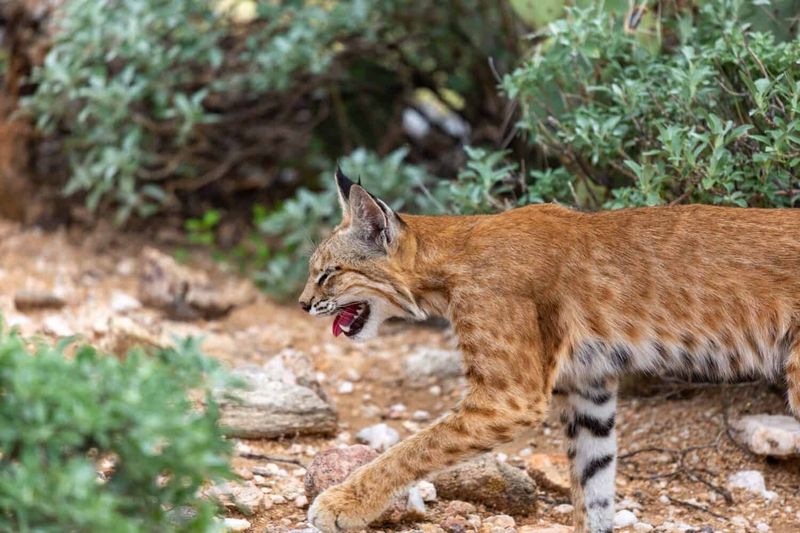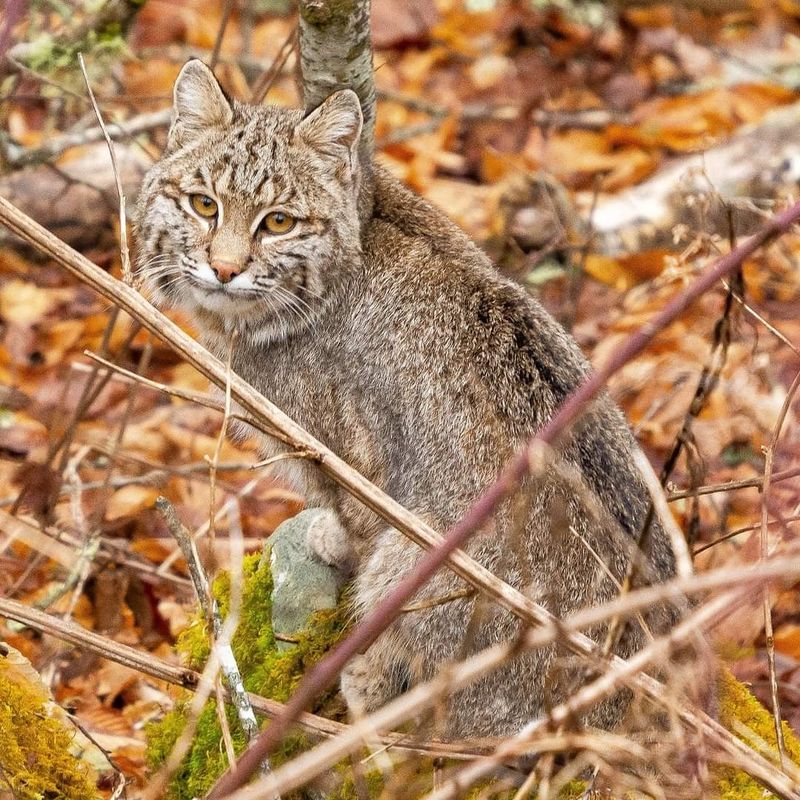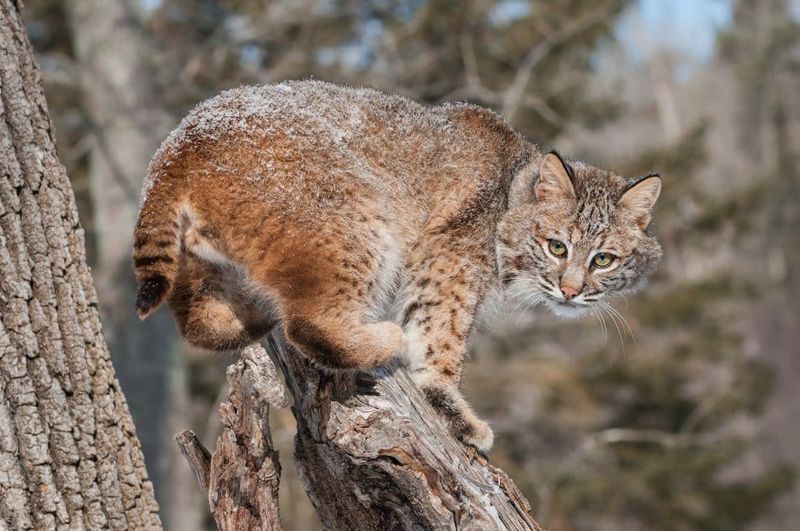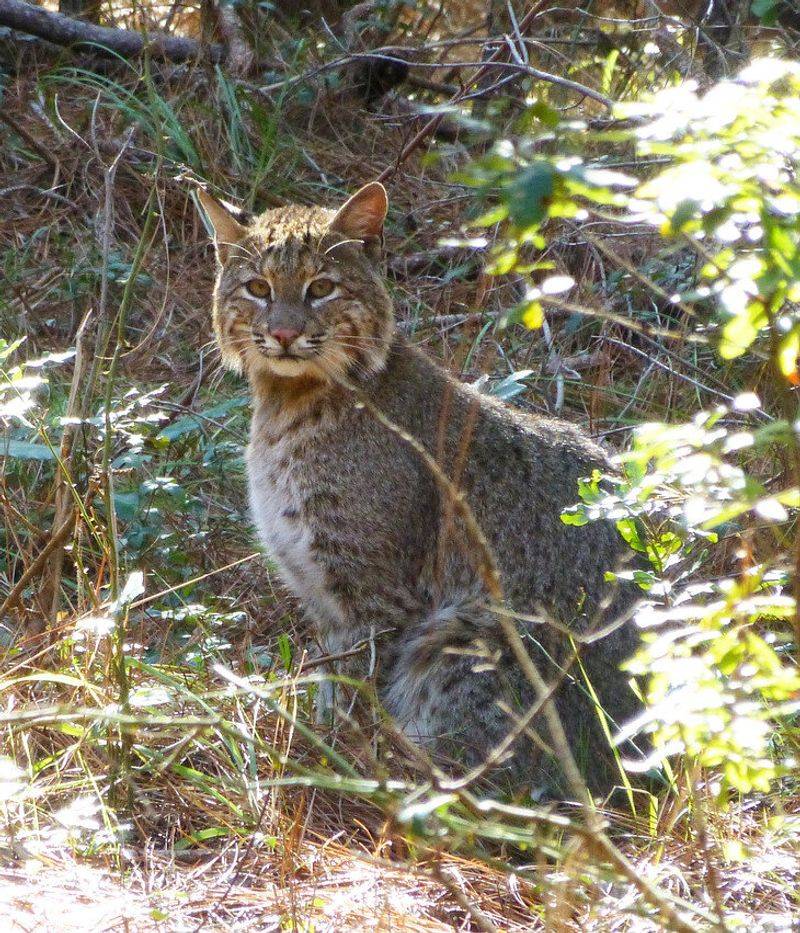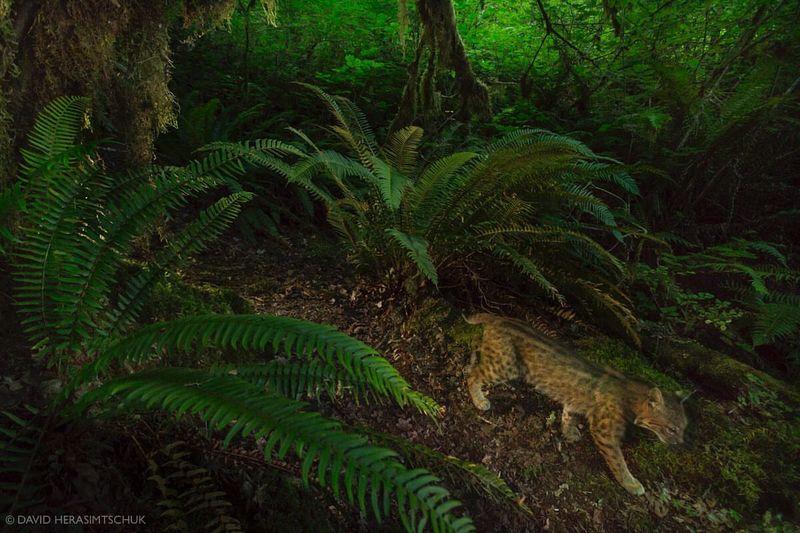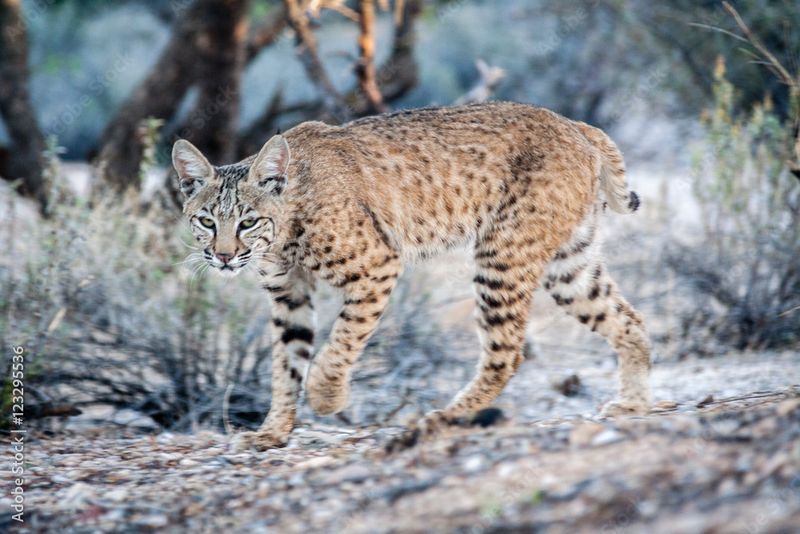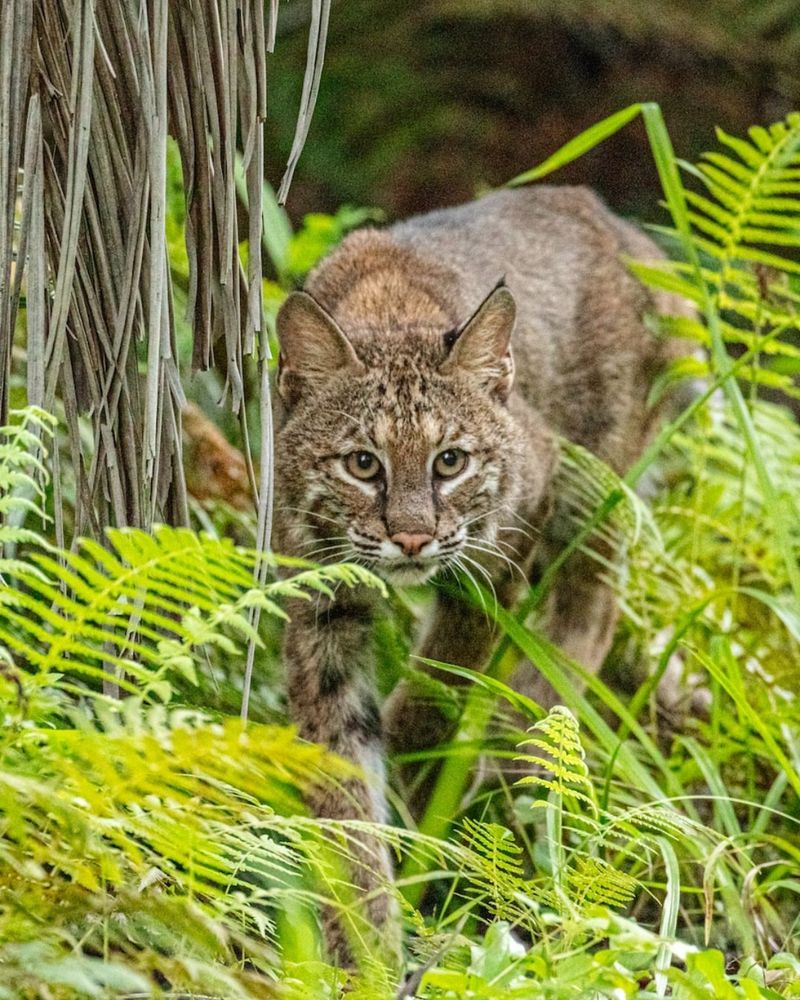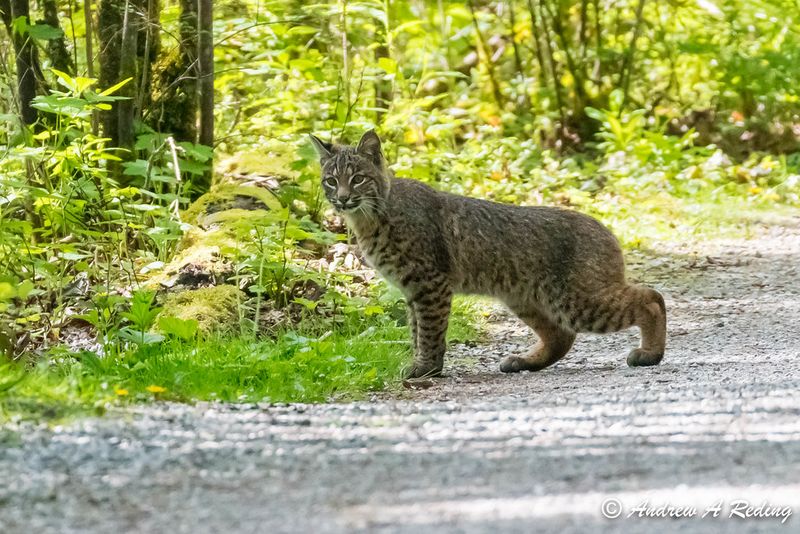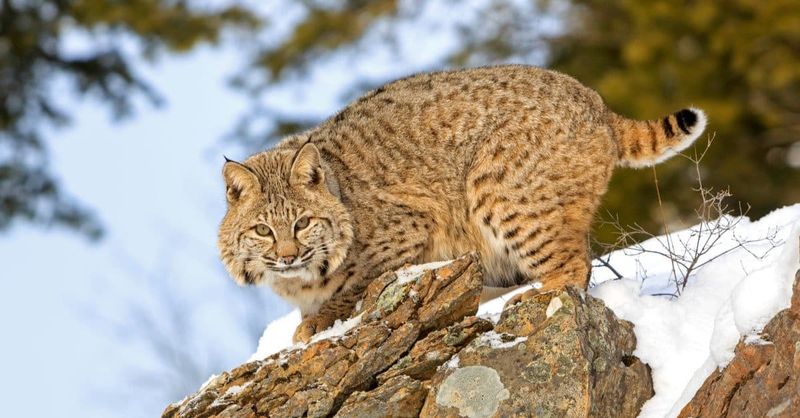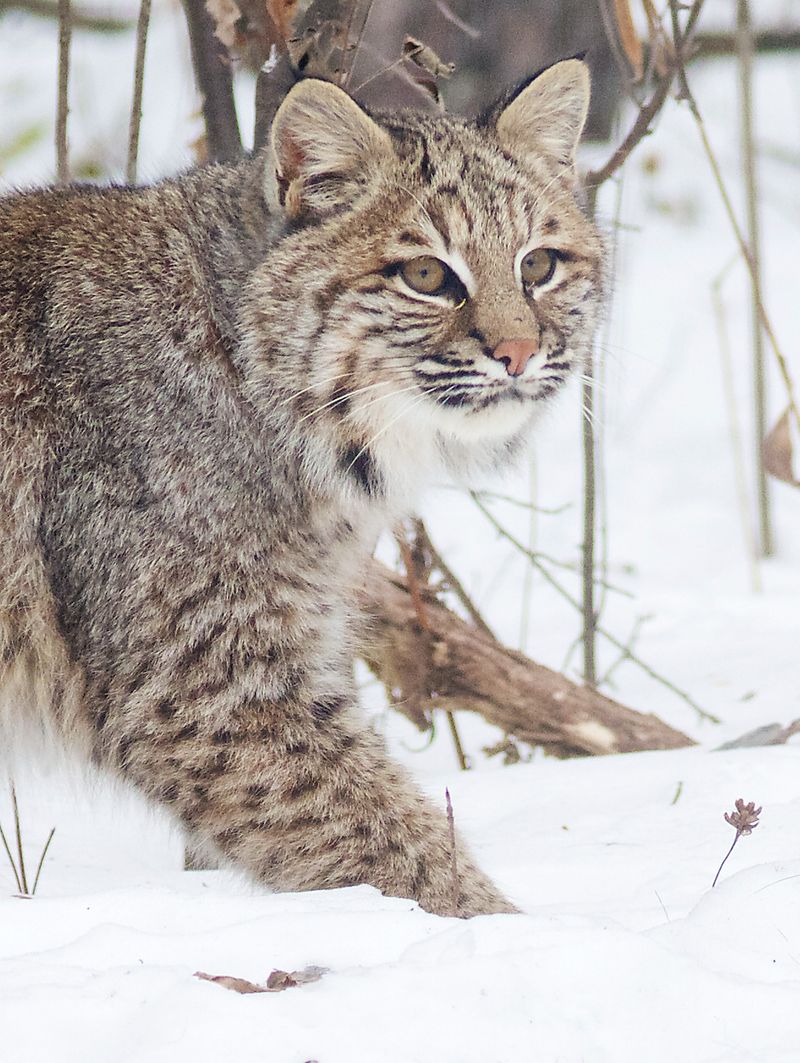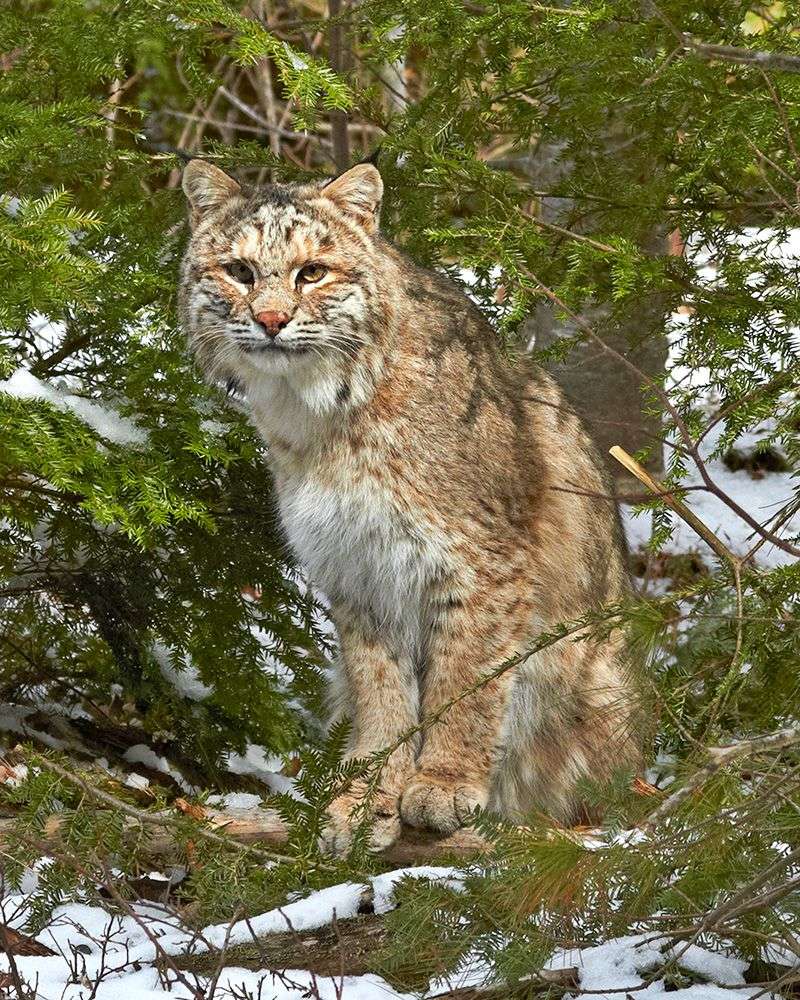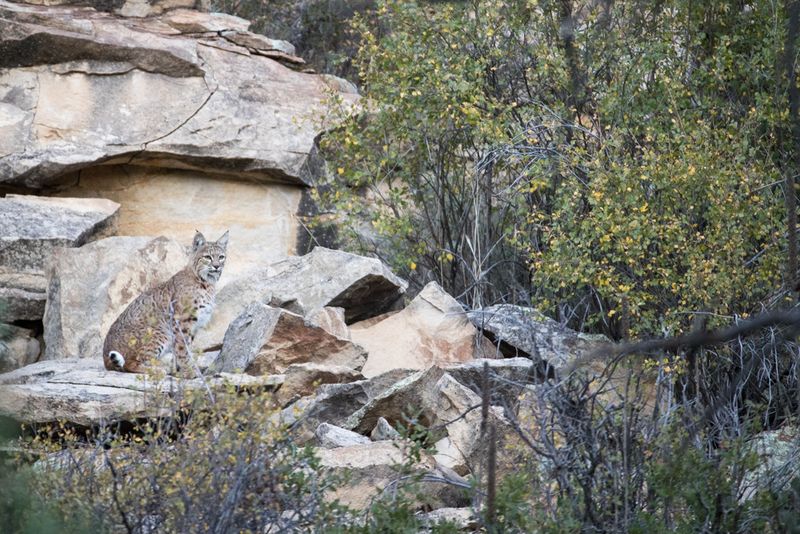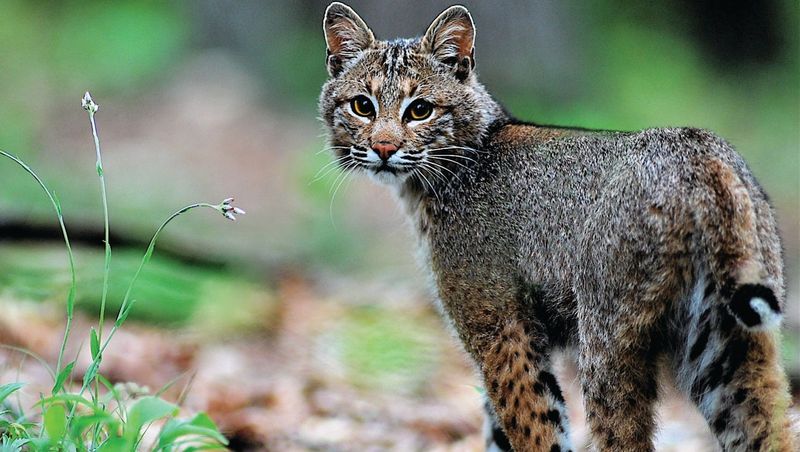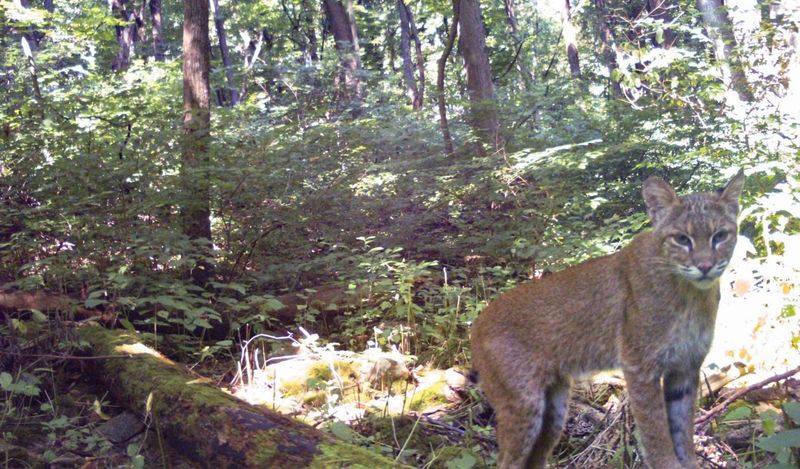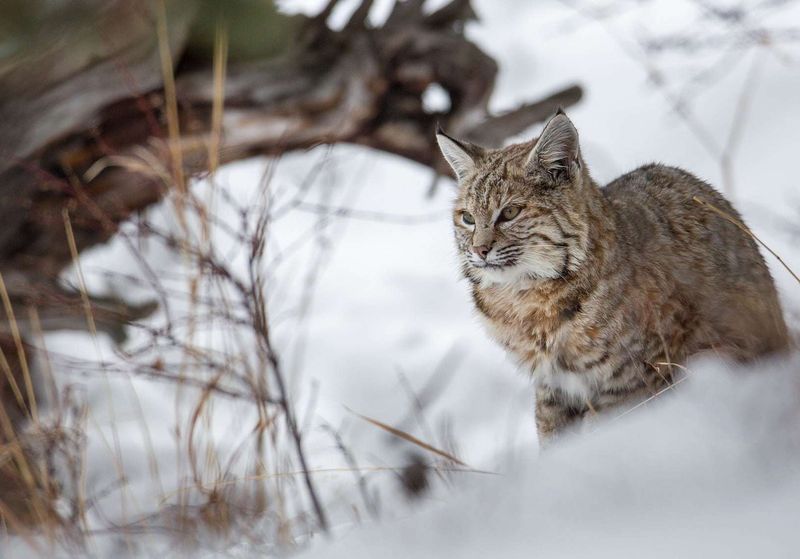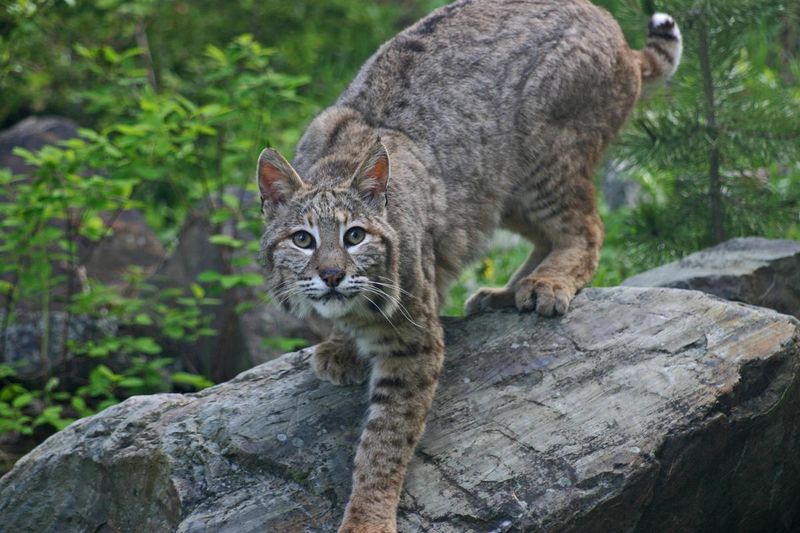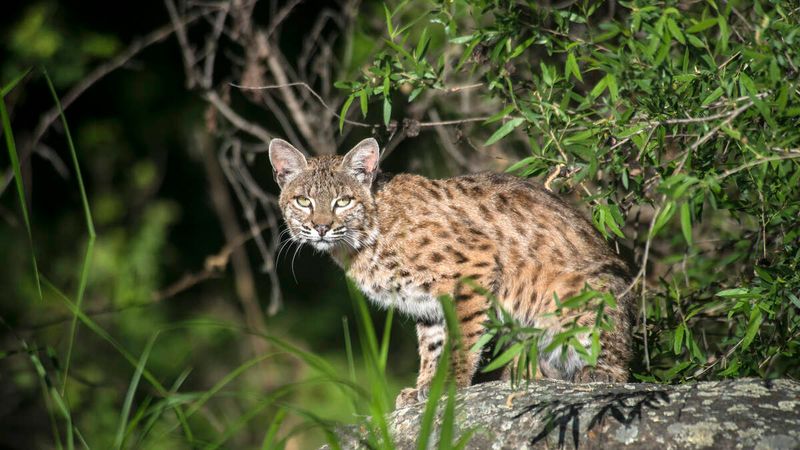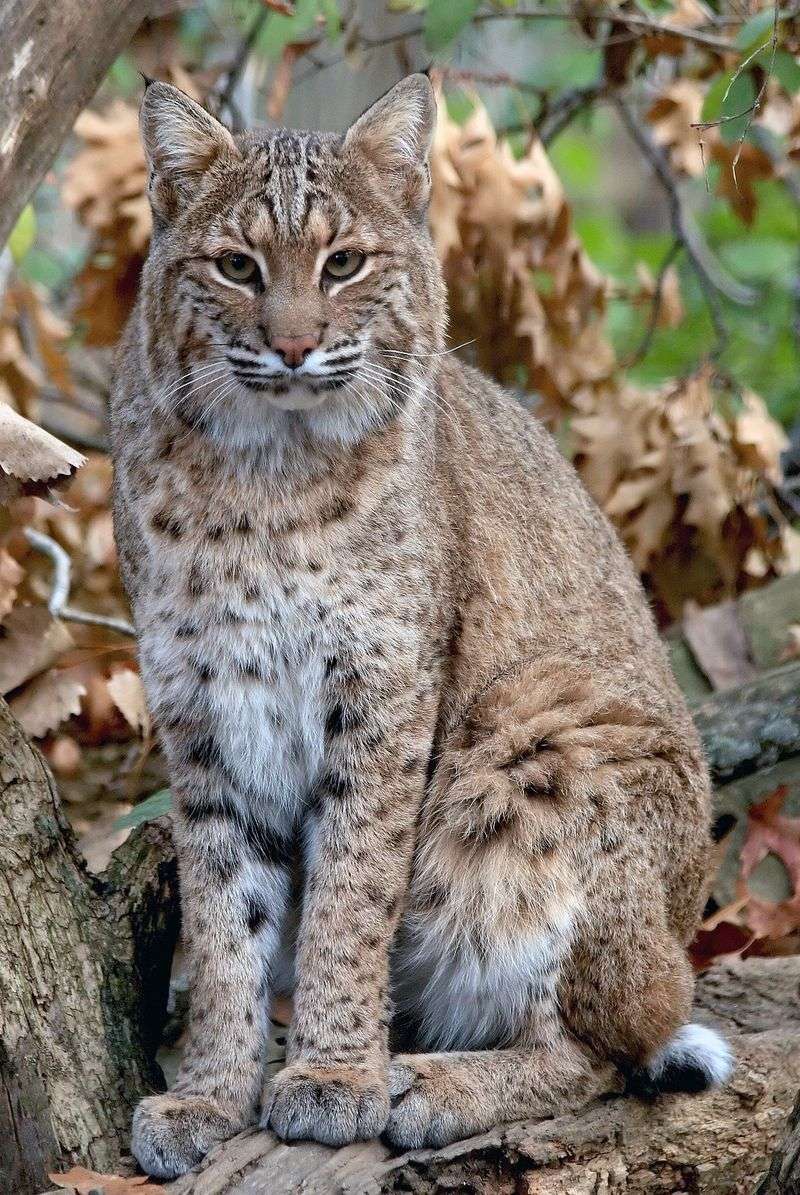📖 Table of Content:
Bobcats (Lynx rufus) roam extensively across the United States, with some states boasting higher encounter rates due to ideal habitats and lush populations. Discover the 20 states where bobcat sightings are most prevalent, driven by abundant wilderness and diverse terrains. From California’s expansive parks to the dense forests of Maine, these regions provide the perfect backdrop for these elusive felines. While bobcats shy away from human interaction, their presence is undeniable in these territories, making them a fascinating subject to explore for wildlife enthusiasts and residents alike. Learn more about these locations and their unique bobcat populations.
1. California
In California, bobcats thrive within the state’s diverse ecosystems, from coastal forests to desert landscapes. With an estimated population between 70,000 to 100,000, they are frequently spotted in state parks like Point Lobos and national parks such as Pinnacles. The state’s vast wilderness areas, combined with a range of elevations and climates, create the perfect environment for these adaptable creatures. Bobcats here are often seen lurking around trails, their distinctive spotted coats blending effortlessly with the surroundings. Whether you’re hiking or simply exploring, keep your eyes peeled for these solitary animals.
2. Texas
Texas boasts the largest population of bobcats in the United States, with numbers reaching up to 200,000. Predominantly found in the brush country of South Texas, these felines find sanctuary in the dense thickets and open plains. The state’s varied topography, ranging from dry deserts to lush forests, provides ample cover and prey for bobcats. Encounters are common in the early morning or late evening when these nocturnal hunters are most active. Texans often share tales of brief sightings, capturing the mystique and elusive nature of these wild cats.
3. North Carolina
North Carolina, with its lush forests and mountainous regions, is home to over 125,000 bobcats. These agile hunters are prevalent in the Coastal Plain and the Appalachian foothills. The varied landscapes offer them an abundance of prey and shelter, making encounters rather frequent. In this state, bobcats can be observed gracefully moving through dense underbrush or pausing to survey their surroundings. As the leaves change color in fall, the sight of a bobcat against the vibrant foliage is a breathtaking experience for wildlife enthusiasts and hikers alike.
4. Colorado
Colorado’s scenic landscapes, from juniper woodlands to mountainous terrains, are home to about 12,000 bobcats. Known for their stealth and adaptability, these felines navigate the state’s rugged environment with ease. Spotting a bobcat amidst Colorado’s snow-capped peaks or arid canyons can be a thrilling experience for nature lovers. Their solitary nature makes them a rare treat to observe, often seen basking in the sun or stalking through the grasslands. Each encounter in Colorado is a reminder of the untamed spirit of these remarkable animals.
5. Georgia
In Georgia, bobcats are commonly found across the state, inhabiting mixed forests and agricultural areas. Their presence is woven into the fabric of Georgia’s wild landscapes, where they hunt and thrive. Sightings are often reported in rural areas, where the boundaries between human habitation and wilderness blur. These cats are known for their resourcefulness, adapting easily to the changing environment. Whether prowling through a pine forest or crossing open fields, Georgia’s bobcats embody the resilience and beauty of the state’s natural world.
6. Oregon
Oregon’s diverse ecosystems, from dense forests to rugged coastlines, are home to around 7,000 bobcats. Western Oregon, with its abundant wildlife and lush greenery, offers an ideal habitat for these elusive hunters. These cats are masters of camouflage, often blending seamlessly into the foliage as they stalk through the underbrush. For those who venture into Oregon’s wilderness, the possibility of a bobcat sighting adds an element of excitement to the journey. Observing a bobcat in its natural habitat is a testament to the untamed beauty of Oregon’s landscapes.
7. Arizona
Arizona’s Sonoran Desert, with its dramatic vistas and diverse wildlife, is home to between 3,000 and 7,000 bobcats. These adaptable felines thrive in the harsh desert environment, utilizing their keen senses to navigate the challenging terrain. The desert’s arid landscape, dotted with cacti and rugged mountains, provides a unique backdrop for bobcat encounters. Sightings are most likely during the cooler hours of dawn and dusk, when these secretive animals emerge to hunt. For those who traverse Arizona’s deserts, the chance to glimpse a bobcat is a rare and rewarding experience.
8. Florida
Florida’s diverse ecosystems, from swamps to pine flatwoods, support a bobcat population of approximately 300,000. Despite pressures from habitat loss, these resilient cats continue to thrive across the state. The Big Cypress National Preserve is a well-known bobcat haven, where visitors may spot them moving stealthily through the wetlands. Bobcats in Florida are adept climbers and swimmers, making them well-suited to the varied landscapes. Their elusive nature coupled with the state’s rich biodiversity make encounters a special experience for those exploring Florida’s wild heart.
9. South Carolina
South Carolina, with its sprawling forests and wetlands, is home to about 90,000 bobcats. These cats are particularly prevalent in the lower Coastal Plain region, where the mix of dense foliage and open spaces offers ideal hunting grounds. Bobcats here are known for their stealth and grace, often observed darting through the shadows. For those who venture into South Carolina’s natural areas, the chance to witness a bobcat in action is both exhilarating and humbling. Their presence highlights the state’s commitment to preserving its rich wildlife heritage.
10. Michigan
In Michigan, an estimated 10,000 bobcats inhabit the state’s northern forests, particularly in the Upper Peninsula. These cats are well-adapted to the cold, often seen padding silently across snow-covered landscapes. Michigan’s wild expanses provide ample territory for bobcats to hunt and roam. Their tracks are a common sight for those exploring the state’s rugged wilderness, offering a glimpse into the secretive world of these solitary creatures. Observing a bobcat against the backdrop of Michigan’s pristine winter scenery is a moment of pure wilderness magic.
11. Minnesota
Minnesota’s northern regions, with their dense forests and abundant cover, are home to approximately 2,000 bobcats. These elusive animals prefer the secluded woodlands, where they can move unseen. The state’s harsh winters and rich biodiversity make it a challenging yet rewarding habitat for bobcats. Sightings are rare but memorable, often occurring in the twilight hours when these nocturnal hunters are most active. In Minnesota, the bobcat’s silent presence in the forest reflects the untamed beauty and mystery of the state’s natural landscapes.
12. Maine
Maine’s dense forests provide a perfect backdrop for its thriving bobcat population. These stealthy felines are often spotted in the state’s wooded areas, where their numbers are increasing. Maine’s varied landscapes, from coastal regions to inland forests, offer ideal habitats for bobcats to hunt and roam. Each sighting in Maine is a testament to the state’s commitment to wildlife conservation. For those lucky enough to encounter a bobcat in the wild, it is an unforgettable experience that highlights the raw beauty of Maine’s wilderness.
13. New Mexico
New Mexico’s landscapes, from deserts to mountains, host a vibrant bobcat population. These adaptable creatures are found throughout the state, thriving in its diverse environments. The sight of a bobcat poised on a rocky outcrop, silhouetted against the setting sun, captures the essence of New Mexico’s wild spirit. These cats are known for their resilience, navigating the challenging terrain with grace and agility. For those exploring New Mexico’s wilderness, the opportunity to observe a bobcat in action is a reminder of the delicate balance of nature.
14. Montana
Montana’s vast wilderness is home to approximately 4,000 bobcats, thriving in forests and prairies. The state’s expansive landscapes offer plentiful hunting grounds, where these agile predators can hunt and roam freely. Bobcats in Montana are often seen moving through the brush, their keen eyes scanning for prey. The remote and rugged terrain provides the perfect setting for these solitary creatures, making each encounter a unique experience. Observing a bobcat in Montana is a vivid reminder of the state’s wild heart and untouched beauty.
15. Iowa
Iowa’s southern regions, with their rolling hills and dense woodlands, support a thriving bobcat population estimated at 6,000. Conservation efforts have played a crucial role in their resurgence, with sightings becoming increasingly common. These stealthy hunters are often seen moving through tall grasses, their coats blending seamlessly with the landscape. Iowa’s commitment to habitat protection ensures that bobcats continue to thrive, offering wildlife enthusiasts the chance to witness these elusive creatures firsthand. Each encounter in Iowa is a celebration of the state’s natural heritage.
16. West Virginia
West Virginia’s mountainous and heavily wooded regions are home to an estimated 2,500 bobcats. The state’s dense forests offer the perfect environment for these elusive cats to hunt and roam. Sightings are rare but cherished, often occurring in the quiet hours of dawn or dusk. For those exploring West Virginia’s rugged landscapes, a bobcat encounter is a moment of awe and wonder. These secretive animals embody the wild essence of the state’s natural beauty, making each sighting a treasured memory for nature lovers.
17. Vermont
Vermont’s forests are home to about 3,000 bobcats, elusive creatures known for their stealth and grace. These cats are primarily found in rural areas and are adept at navigating the state’s varied landscapes. During the winter months, bobcats are often spotted silently moving through the snow, their tracks a testament to their presence. Encounters are rare but memorable, offering a glimpse into the lives of these solitary hunters. Vermont’s commitment to preserving its natural habitats ensures that bobcats continue to thrive in the Green Mountain State.
18. Kentucky
Kentucky’s rolling hills and diverse habitats are home to an estimated 3,000 to 5,000 bobcats. These adaptable animals are spotted across the state, with sightings on the rise in northern regions. The state’s rich landscapes provide ample cover and prey for bobcats, making it an ideal environment for these elusive creatures. Observing a bobcat in Kentucky is a thrilling experience, reflective of the state’s vibrant natural world. Their presence is a reminder of the importance of conservation efforts in preserving Kentucky’s wildlife diversity.
19. Missouri
Missouri’s diverse landscapes, from forests to prairies, have witnessed a growing bobcat population over the past two decades. These elusive cats are frequently spotted across various regions, blending effortlessly with the surroundings. Missouri’s commitment to wildlife conservation has supported the resurgence of bobcats, making them a common sight for nature enthusiasts. Observing a bobcat in its natural habitat is a testament to the state’s successful conservation efforts. Each encounter offers a unique insight into the lives of these solitary hunters, highlighting Missouri’s wild heart.
20. New York
New York’s Southern Tier and central regions are witnessing a gradual recolonization of bobcats. These stealthy animals are making a comeback, reclaiming their historical range with grace and resilience. Their presence in the state’s varied landscapes, from forests to meadows, is a testament to successful conservation efforts. Bobcats in New York are often glimpsed at dawn or dusk, moving silently through the underbrush. Each sighting is a celebration of nature’s ability to adapt and thrive, offering hope for the future of the state’s wildlife.
